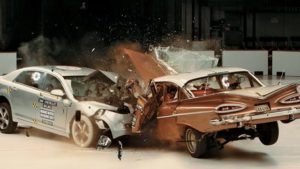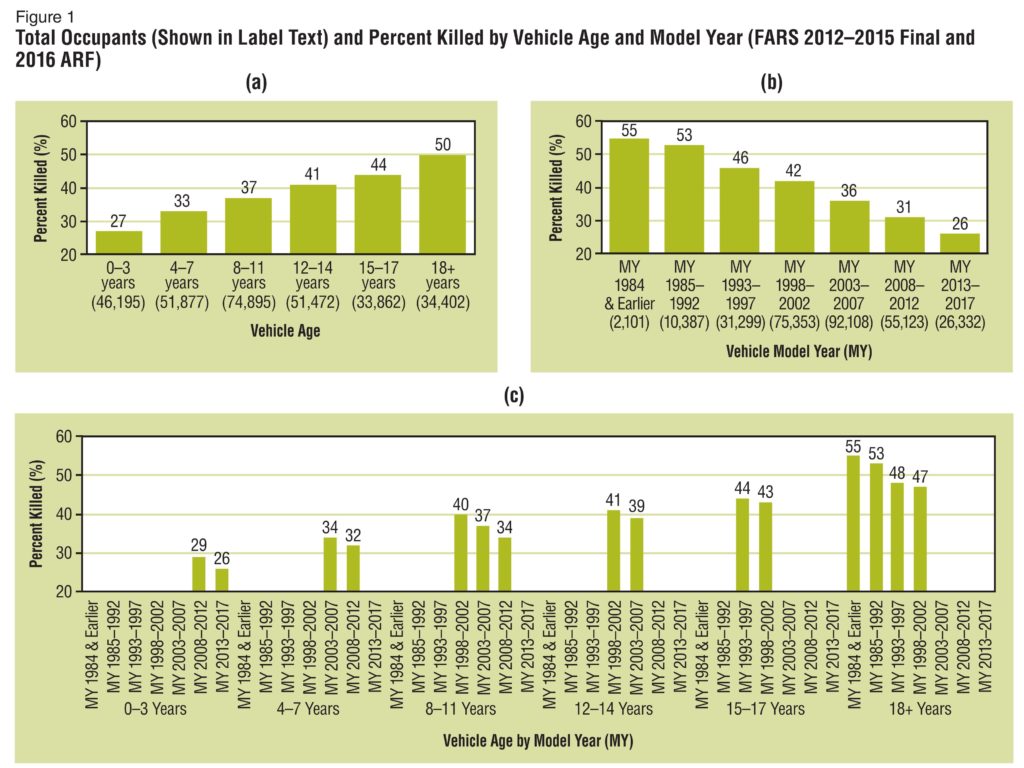
NHTSA finds more evidence newer vehicles safer; take steps to keep them that way
By onAnnouncements | Business Practices | Market Trends | Repair Operations | Technology
Any time a body technician, manager, insurer or customer seeks to repair a car the same way it’s been done for years in defiance of OEM repair procedures, direct them to the federal government for a lesson in why that’s a bad idea.
New research from the National Highway Transportation Safety Administration announced May 9 indicates what should be obvious but still seems to elude some shops and carriers: Cars are safer now because of new technology.
You’ll have to connect the final dot for them — new technology means new repair procedures — but the job should be easier with this research. NHTSA even put out a handy little book with examples of all the new advanced driver assistance system technologies that a shop can use to educate themselves, the insurer and the customer about some of the new equipment encountered by the shop.
“As vehicle safety improvements become more widespread, this trend is expected to continue,” NHTSA wrote in a May 9 news release.
NHTSA examined the rate of death of occupants in cars, pickups and SUVs which fatally crashed between 2012 and 2016. (If nobody died, NHTSA didn’t study it.) Vehicles 18 years or older saw half of their occupants killed in a crash. Vehicles 0-3 years old only saw 27 percent of their occupants dead.
Going by model year, it was more than 50-50 you’d be among the body count in a model year 1992 or older vehicle that killed at least one person. By the 2013-17 model years, your odds were down to 1 in 4 you wouldn’t survive.
NHTSA offered the caveat that it didn’t control for other factors such as “Delta-V, seat belt use, age, sex,” noting that those could be incorporated in future research. However, it also noted that prior research on fatal and nonfatal crashes supported its finding that older model years and older cars (a slightly different stat) yielded higher injury severity (with death being obviously the highest injury severity).
“We encourage car buyers to select vehicles that meet their individual lifestyle, budget and transportation needs with the added assurance that they are making an investment in safety,” NHTSA Deputy Administrator Heidi King said in a statement May 9, referencing “the busiest car buying season” kicking off in May.
Repairers should note that some of the technology likely saving lives during the NHTSA study period and preventing a crash from being fatal at all is even older than the snazzy stuff that was detailed in the agency’s ADAS pamphlet.
Logically, the concept of ADAS extends to features like electronic stability control, which has been required since the 2012 model year and often demands calibration. Antilock brakes, which work in conjunction with the system, were already common before that model year.
Other tech:
- Side airbags were a likely consequence of a rollover rule that phased in between the 2014 and 2017 model years, though many cars already had them by MY 2011.
- The IIHS’ narrow-offset crash test began in calendar year 2012 and encouraged stronger steels in bodies-in-white.
- Every vehicle needed to have a tire-pressure monitoring system by MY 2008.
- Airbags were first mandated on all cars with the 1998 model year and everything else since 1999
- Advanced airbags — the ones which are “smart” enough to avoid deploying when a kid is in the front seat and can require calibration — first appeared in the 2004 model year and were phased in between calendar years 2003-06.
Finally, there’s our favorite example of why cars are different today and why the repair methods might be too. Here’s the IIHS 50th anniversary mash-up of a 1959 Bel Air and a 2009 Chevrolet Malibu — which is a few years before the Malibu was redesigned with even more high-strength steel. Granted, both cars are striking a different object, a methodology issue. However, as the Malibu has a lower curb weight than a ’59 Bel Air, the modern car was the one playing with the physics handicap — and it still won.
“It was night and day, the difference in occupant protection,” IIHS President Adrian Lund said in a statement. “What this test shows is that automakers don’t build cars like they used to. They build them better.”
More information:
“As Car Buying Season Approaches, New NHTSA Report Shows Newer Vehicles Are Safer”
National Highway Traffic Safety Administration, May 9, 2018
“Passenger Vehicle Occupant Injury Severity by Vehicle Age and Model Year in Fatal Crashes”
NHTSA, April 2018
“Test compares crashworthiness then and now”
Insurance Institute for Highway Safety, Oct. 13, 2009
NHTSA vehicle shopper’s guide to driver assistance technologies
Images:
The Insurance Institute for Highway Safety celebrated its 50th anniversary with a mash-up of a 1959 Bel Air and a 2009 Chevrolet Malibu. (Provided by IIHS)
New research from the National Highway Transportation Safety Administration announced May 9 indicates cars are safer now because of new technology. (Provided by National Highway Traffic Safety Administration)

